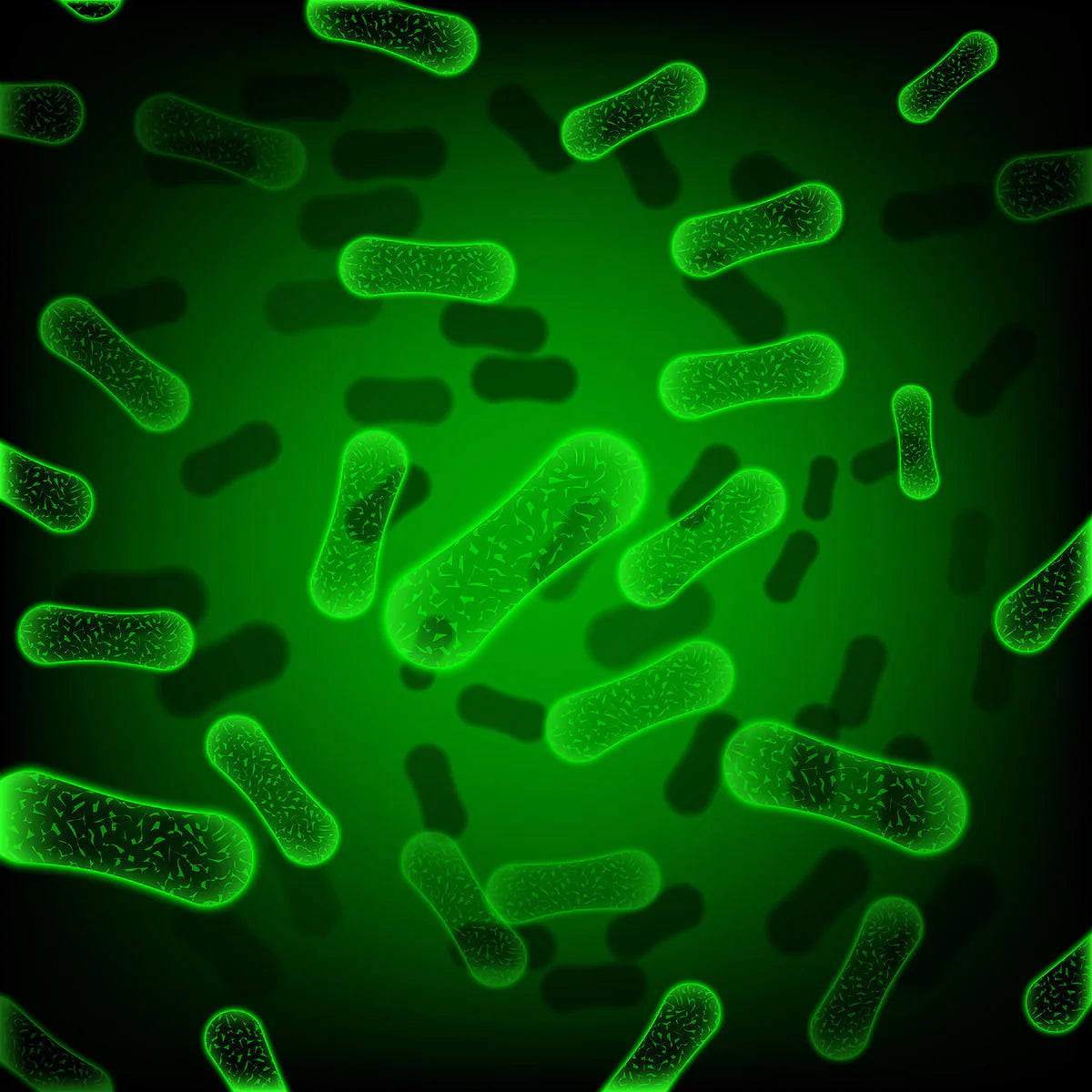
Purificateurs d'air pour moisissures en suspension dans l'air
Purifie l'air des spores, des mycotoxines et des odeurs et protège les poumons sensibles
-
Purificateur d'air à usage général avec 560 CFM
 Promotion
PromotionPurificateur d'air Air Medic Pro 6
Prix habituel À partir de $594.98 USDPrix habituelPrix unitaire / par$799.98 USDPrix promotionnel À partir de $594.98 USDPromotion -
Offre à durée limitée
 Promotion
PromotionPurificateur d'air AirMedic Pro 5
Prix habituel À partir de $509.98 USDPrix habituelPrix unitaire / par$699.98 USDPrix promotionnel À partir de $509.98 USDPromotion -
Offre à durée limitée
 Promotion
PromotionPurificateur d'air AirMedic Pro 5 HD
Prix habituel À partir de $722.98 USDPrix habituelPrix unitaire / par$999.98 USDPrix promotionnel À partir de $722.98 USDPromotion -
Filtration à domicile et au bureau avec une plus grande capacité de filtration
 Promotion
PromotionPurificateur d'air AirMedic Pro 6 Plus
Prix habituel À partir de $679.98 USDPrix habituelPrix unitaire / par$899.98 USDPrix promotionnel À partir de $679.98 USDPromotion
Nos purificateurs d'air recommandés pour les moisissures
- Filtre HEPA qui élimine les fines spores de moisissures en suspension dans l'air
- Filtre à charbon actif industriel extra-profond pour éliminer les odeurs et les mycotoxines
- Sa conception industrielle robuste permet un fonctionnement 24h/24 et 7j/7. Aucune pièce numérique à régler ou à réparer ; une conception plug-and-play simple pour un fonctionnement sans souci.
- Filtration UV disponible pour une filtration améliorée des contaminants biologiques
-

Élimine les mycotoxines et les odeurs en suspension dans l'air
Les filtres à charbon actif les plus profonds de l’industrie pour éliminer davantage de polluants de moisissures en suspension dans l’air.
-

Piège les spores et les particules fines
Élimine 99,99 % des particules et des contaminants en suspension dans l’air grâce à la filtration Super HEPA.
-

Facile à entretenir
Conception industrielle robuste pour un fonctionnement fiable et continu 24h/24 et 7j/7. Changement des préfiltres en quelques secondes, sans outils.
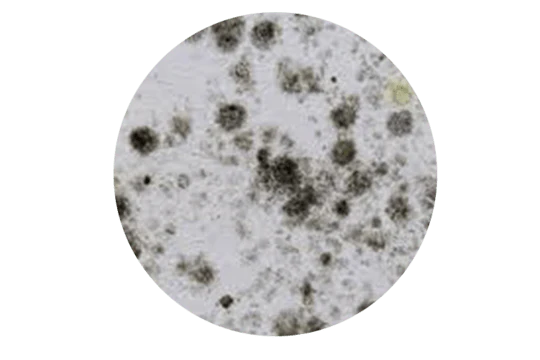
Avez-vous besoin d’une élimination professionnelle des moisissures ?
Bien qu’un bon purificateur d’air élimine les spores de moisissures en suspension dans l’air et les sous-produits de moisissures, il ne peut pas éliminer les moisissures étendues qui se développent sur les surfaces.
La règle générale est que si la zone de moisissure dépasse 10 pieds carrés, vous devez appeler un professionnel.
Vous devriez également envisager de faire appel à un professionnel si l'odeur est forte, si vous ne parvenez pas à localiser la source (zones humides, éviers qui fuient, etc.) ou si vous avez des membres de votre famille souffrant d'allergies, de poumons sensibles ou dont le système immunitaire est affaibli.
Un purificateur d’air est un outil idéal à utiliser pour les petits problèmes, dans les zones sujettes aux inondations, les sous-sols, les zones de stockage ou en attendant que des professionnels traitent un problème plus important.

Un purificateur d'air pour les allergies aux moisissures
De nombreuses personnes choisissent également d’utiliser un purificateur d’air contre les moisissures lorsqu’elles sont allergiques aux moisissures extérieures ou aux moisissures courantes généralement présentes dans nos environnements.
La moisissure peut pénétrer dans votre maison par les bouches d'aération, les portes, les fenêtres et les systèmes de chauffage et de climatisation. Elle peut également se fixer aux vêtements, aux sacs et aux animaux domestiques, et être transportée à l'intérieur.
L’utilisation régulière d’un purificateur d’air aidera à purifier l’air des moisissures courantes en suspension dans l’air et d’autres polluants qui aggravent les allergies, l’asthme et les poumons sensibles.
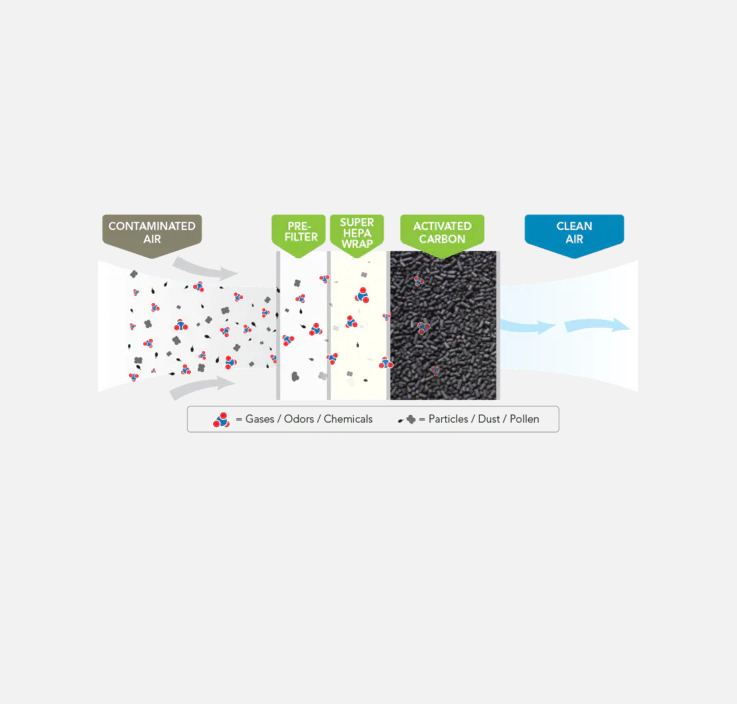
Comment un purificateur d’air élimine-t-il les moisissures en suspension dans l’air ?
Un purificateur d'air AllerAir nettoie votre air intérieur des moisissures en suspension dans l'air en plusieurs étapes :
- Un préfiltre élimine les particules plus grosses
- Le Super HEPA piège jusqu'à 99,99 % des spores de moisissures fines en suspension dans l'air
- Le filtre à charbon actif à lit profond absorbe les cotoxines, les produits chimiques, les gaz et les odeurs en suspension dans l'air
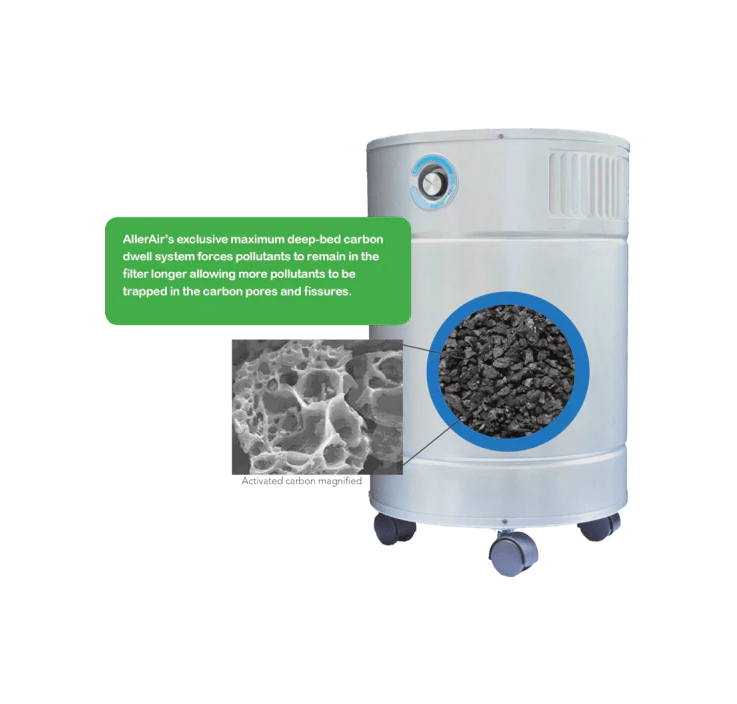
Comment fonctionne le charbon actif ?
Utilisé sur les polluants atmosphériques les plus dangereux au monde, le charbon actif est l’une des méthodes de filtration les plus sûres et les plus efficaces utilisées aujourd’hui.
Le charbon actif attire les polluants et les emprisonne dans des millions de minuscules pores et fissures. La surface du charbon actif est si étendue que si l'on pouvait étaler toutes les ouvertures microscopiques d'une seule cuillère à café de charbon actif, on couvrirait un terrain de football entier. Cette propriété unique permet au charbon d'éliminer de très grandes quantités de produits chimiques, de gaz et d'odeurs.
Les filtres contenant une faible quantité de charbon actif ou de poussière de charbon actif pulvérisée sur les mailles n'offrent pas suffisamment d'ouvertures pour retenir les polluants et peuvent rapidement être saturés. Cela entraîne des changements de filtre plus fréquents et une filtration inefficace.
Les filtres AllerAir durent en moyenne 2 à 5 ans, selon le niveau de pollution.
Articles récents de Clean Air News
-
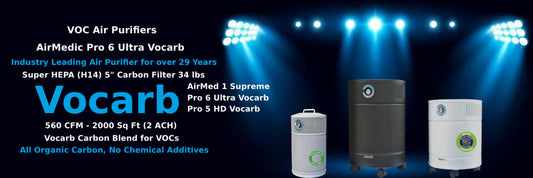
Meilleurs purificateurs d'air pour les COV des ...
Les incendies de forêt de Los Angeles qui ont ravagé le sud de la Californie, l'incendie de Palisades à Pacific Palisades et l'incendie d'Eaton à Altadena sont l'une des pires...
Meilleurs purificateurs d'air pour les COV des ...
Les incendies de forêt de Los Angeles qui ont ravagé le sud de la Californie, l'incendie de Palisades à Pacific Palisades et l'incendie d'Eaton à Altadena sont l'une des pires...
-
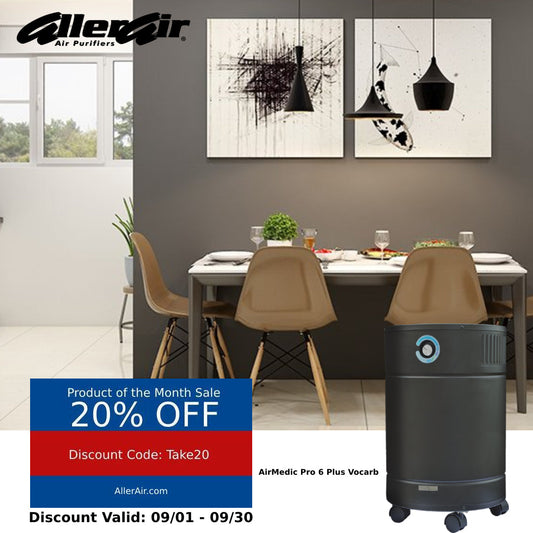
Produit du mois : Purificateur d'air AirMedic P...
Le purificateur d'air AllerAir AirMedic Pro 6 Plus Vocarb est le modèle phare de l'ancien purificateur d'air de la série 6000, anciennement connu sous le nom d'unité Vocarb 6000 D....
Produit du mois : Purificateur d'air AirMedic P...
Le purificateur d'air AllerAir AirMedic Pro 6 Plus Vocarb est le modèle phare de l'ancien purificateur d'air de la série 6000, anciennement connu sous le nom d'unité Vocarb 6000 D....
-
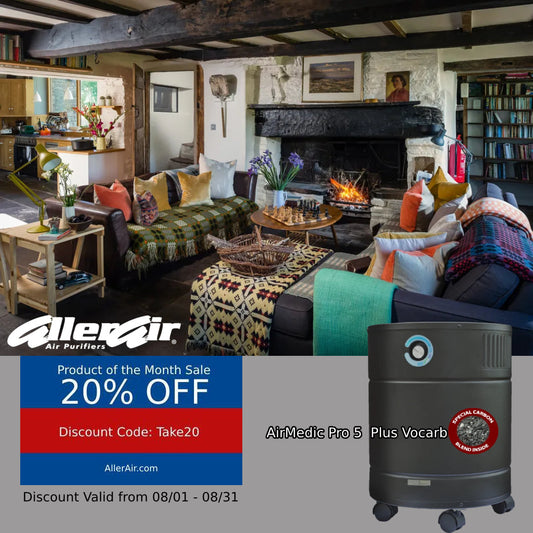
Produit du mois : Purificateur d'air AirMedic P...
Le purificateur d'air AllerAir AirMedic Pro 5 Plus Vocarb est le modèle phare de tous les purificateurs d'air AllerAir, anciennement connus sous le nom d'unité Vocarb 5000 D. L'AirMedic Pro...
Produit du mois : Purificateur d'air AirMedic P...
Le purificateur d'air AllerAir AirMedic Pro 5 Plus Vocarb est le modèle phare de tous les purificateurs d'air AllerAir, anciennement connus sous le nom d'unité Vocarb 5000 D. L'AirMedic Pro...
-
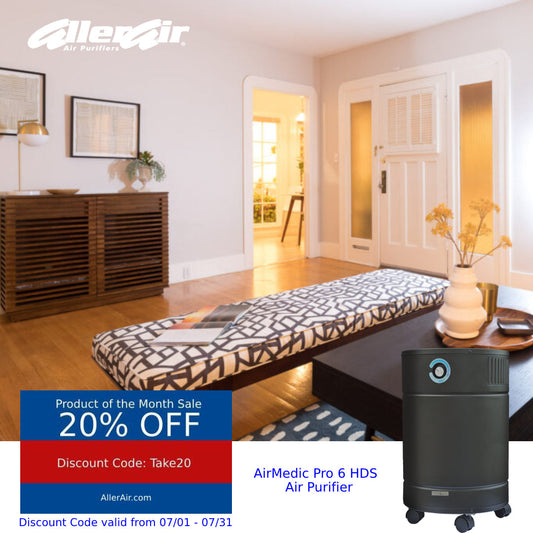
Produit du mois : Purificateur d'air à fumée Ai...
Le purificateur d'air AirMedic Pro 6 HDS Smoke est un purificateur d'air haut de gamme conçu et fabriqué pour filtrer la fumée et les COV nocifs des feux de forêt....
Produit du mois : Purificateur d'air à fumée Ai...
Le purificateur d'air AirMedic Pro 6 HDS Smoke est un purificateur d'air haut de gamme conçu et fabriqué pour filtrer la fumée et les COV nocifs des feux de forêt....











